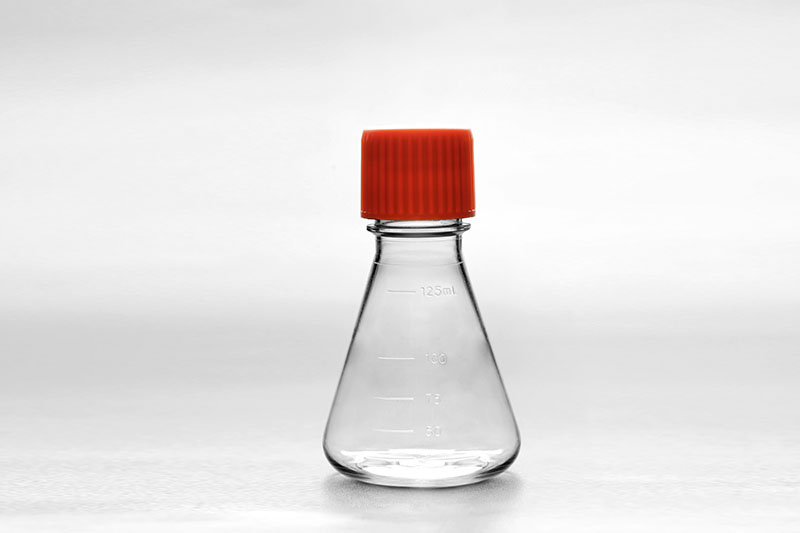As an economical and affordable cell culture tool, the erlenmeyer shake flask has a wide range of applications in the fields of biopharmaceuticals, vaccine preparation, cell and gene therapy, etc. Among them, this kind of container is also used in lentivirus transfection.
Lentiviral vectors are gene therapy vectors developed on the basis of HIV-1. Different from general retroviral vectors, it has the ability to infect both dividing and non-dividing cells, and is widely used in the study of expressing RNAi. The cell shake flask is mainly used in the experiment of lentivirus transfection of suspension cells. The steps are as follows:
125ml-Erlenmeyer-Shake-Flasks
1. Add polybrene to 6 μg/ml and an appropriate amount of virus to 2×105/ml suspended cells, and mix well. Incubate at 37°C. Or centrifuge at room temperature at 150g for 4 hours (selected, this step can improve transfection efficiency for some difficult-to-transfect cell lines).
2. (Selected for this step for cells sensitive to polybrene toxicity) Add an equal volume of fresh medium after 4 hours (or after centrifugation) to dilute polybrene.
1000ml-Erlenmeyer-Shake-Flasks
3. Continue to cultivate for 3-4 days. The growth of intermediate cells can be passaged or the medium can be changed.
When using erlenmeyer shake flask for lentiviral transfection, be sure to use as little medium as possible during infection; adding 5-10ul of Polybrene (the concentration of the stock solution is 2mg/ml) per 1ml of medium can improve the efficiency by about 3 -5 times. However, the problem of virus infection efficiency is relative, and you can achieve your own research purposes.
The FAI climbed 5.9 percent year-on-year in the first 11 months of 2018, quickening from the 5.7-percent growth in Jan-Oct, the National Bureau of Statistics (NBS) said Friday in an online statement.
The key indicator of investment, dubbed a major growth driver, hit the bottom in August and has since started to rebound steadily.
In the face of emerging economic challenges home and abroad, China has stepped up efforts to stabilize investment, in particular rolling out measures to motivate private investors and channel funds into infrastructure.
Friday's data showed private investment, accounting for more than 60 percent of the total FAI, expanded by a brisk 8.7 percent.
NBS spokesperson Mao Shengyong said funds into weak economic links registered rapid increases as investment in environmental protection and agriculture jumped 42 percent and 12.5 percent respectively, much faster than the average.
In breakdown, investment in high-tech and equipment manufacturing remained vigorous with 16.1-percent and 11.6-percent increases respectively in the first 11 months. Infrastructure investment gained 3.7 percent, staying flat. Investment in property development rose 9.7 percent, also unchanged.
 English
English




















































